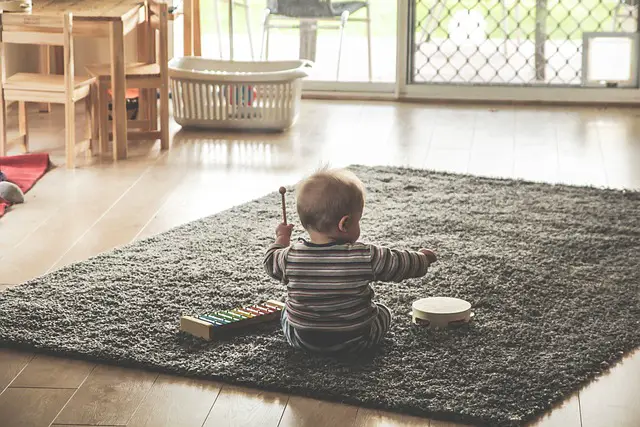As a guardian or parent, your child’s security is of paramount importance. The key to your child’s well-being is effective home childproofing. Childproofing entails scrutinizing potential dangers within your home environment and taking necessary precautions to neutralize them. This extensive article offers a detailed guide on how to childproof your home, highlighting the significance of childproofing, room-specific guidelines, and advice on choosing the right child safety products.
The Indispensable Need for Home Childproofing
Childproofing your home is a vital step in safeguarding your young ones. Children, by nature, are explorative and easily find themselves in precarious situations if your home isn’t appropriately childproofed. Identifying possible threats like loose wires, toxic substances, and sharp corners is of utmost importance. Implementing safety precautions such as baby gates, cabinet locks, and outlet covers can avert mishaps and injuries. Childproofing your home not only shields your child but also instills in you a sense of tranquility. A safe and secure environment fosters your child’s curiosity and growth without constant worry for their safety.
Child Development and Its Influence on Home Childproofing
Understanding child development plays a crucial role in effective home childproofing. As your child matures, they reach significant milestones like walking, climbing, and crawling, each demanding specific safety measures. For instance, safety gates are required when your child starts crawling to prevent falls, while window guards become essential when they start climbing.
Identifying Top Household Dangers for Children
Falls: These are among the leading causes of children’s injuries. To prevent such mishaps, ensure that windows, stairs, and balconies are secured with protective barriers like guards or gates. Eliminate tripping risks like loose rugs or scattered toys. Burns: Open flames, hot appliances, and stovetops are common burn sources. To prevent such incidents, install stove guards, keep hot food and beverages out of reach, and use fire screens. Drowning: A child can drown in even an inch of water. Ensure pools, buckets, bathtubs, and any water bodies are secured with locked gates or covers. Choking: Small items like food or toys can cause choking. Keep such objects out of reach and monitor children during meals. Poisoning: Household cleaners, plants, and medications can be toxic. Keep hazardous substances locked away, out of reach, and ensure all medications are stored in childproof containers.
Step-By-Step Guide to Childproofing Each Room
Kitchen: Install stove guards, secure cabinets and drawers with childproof locks, and keep sharp objects and cleaning supplies out of reach. Bathroom: Set up toilet locks, cover the bathtub and shower drains, and keep all medications and cleaning supplies inaccessible. Bedrooms: Anchor dressers and bookshelves to avoid toppling, keep small objects out of reach, and install window guards. Living Room: Cover sharp corners on furniture, secure stairways with safety gates, and manage all cords and wires effectively. Outdoors: Install fences around pools and hot tubs, lock gates leading to the outdoor area, and ensure safe and properly installed playground equipment.
Guidelines for Selecting Child Safety Products
Consider your child’s age and development level while picking safety items. Opt for products that adhere to safety standards and have been approved by recognized safety institutions. Select products that are straightforward to install and use. Always remember that safety products don’t guarantee complete protection, and constant supervision remains vital.
Age-Specific Childproofing: Infants, Toddlers, and Preschoolers
Infants require maximum protection as they cannot move or communicate effectively. Ensure choking hazards and cords are out of reach, use a safe crib with appropriate bedding, and install baby gates. Toddlers, who begin to crawl and walk, require a more comprehensive childproofing strategy. Secure all furniture and appliances, install outlet covers, and place safety locks on cabinets and drawers. Preschoolers, who are more independent, still require supervision and protection. Ensure that all safety devices function correctly, keep small objects out of reach, and educate them about safety measures.
Childproofing Your Outdoor Space: Key Safety Tips
Ensure all pools and water bodies are properly secured with locked gates or covers. Install fencing around your yard, use soft ground surfaces beneath playground equipment, and eliminate any toxic plants or chemicals. Always supervise your child when they play outdoors.
Emergency Preparedness: First Aid and Emergency Action Plans
Keep a well-equipped first aid kit handy and ensure all caregivers know how to use it. Formulate an emergency plan and ensure all family members are familiar with it and know how to implement it. Regularly carry out emergency drills.
Engaging Your Child in Safety Discussions
Educate your child about safety in an age-appropriate and understandable manner. Use positive reinforcement and celebrate good safety habits. Use examples and role-play to help them comprehend potential dangers and the appropriate course of action during emergencies.
Budget-Friendly Childproofing: DIY Tips
You can repurpose items like cardboard or duct tape to create DIY childproofing solutions. Construct your own baby gates or use bungee cords to secure furniture. Use non-slip mats in bathtubs or showers, and install window guards using affordable materials.
Childproofing Pitfalls to Dodge
Common mistakes to avoid include ignoring your child’s development stage, incorrectly installing safety devices, and not performing regular maintenance and updates. Regularly reassess your childproofing needs as your child grows and develops.

